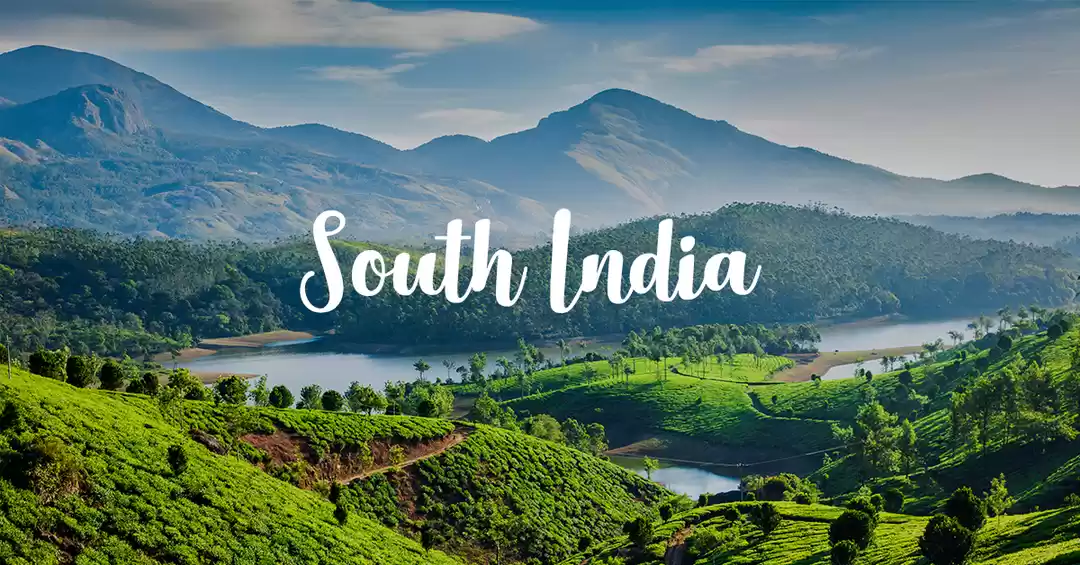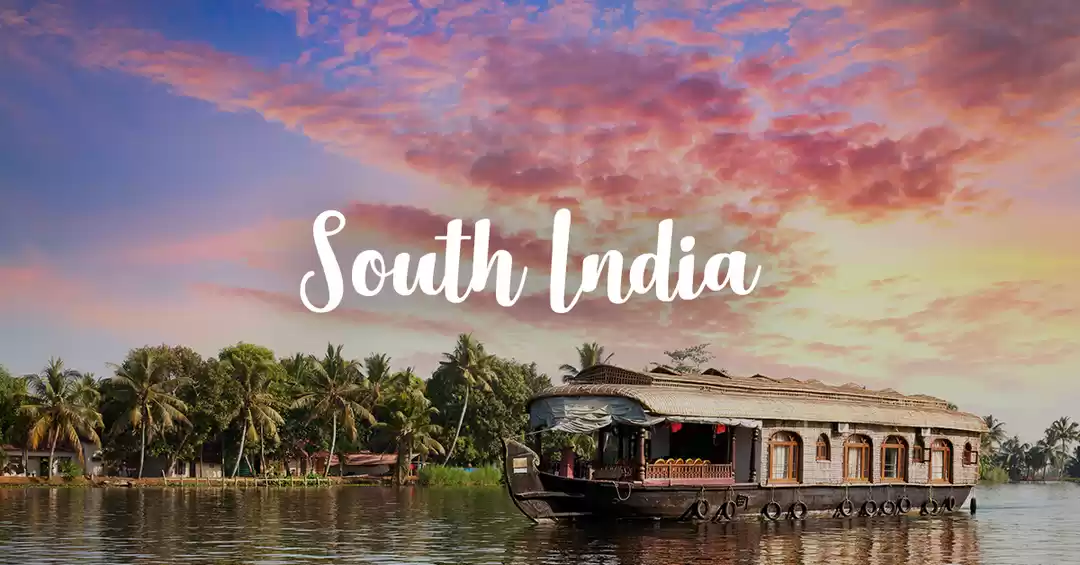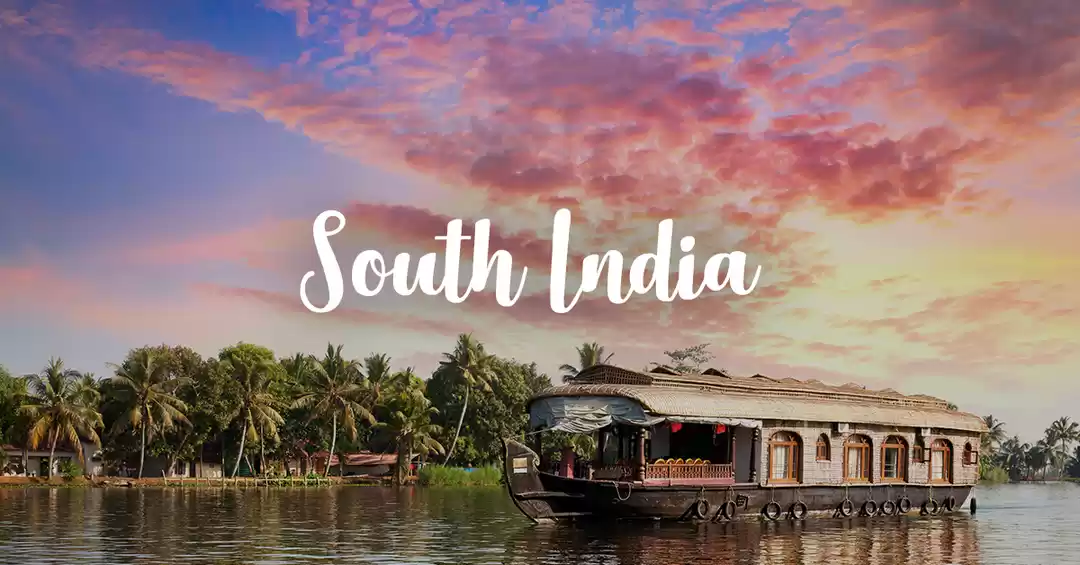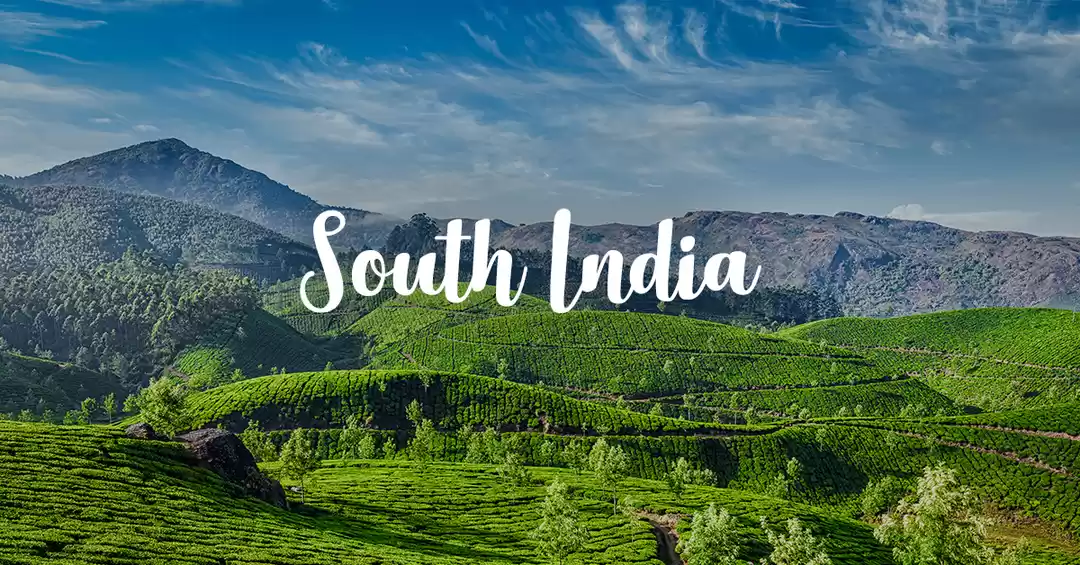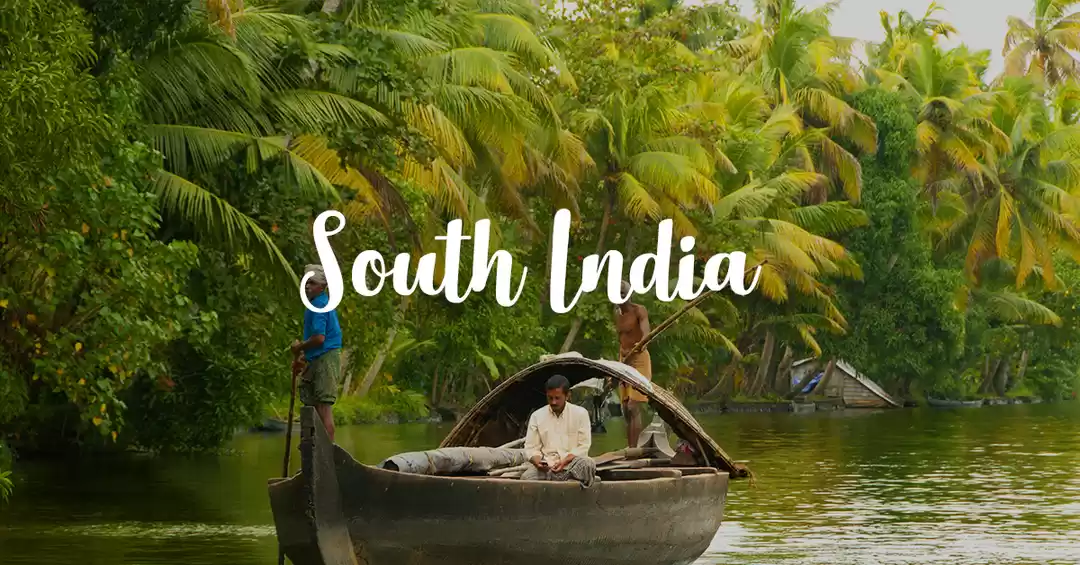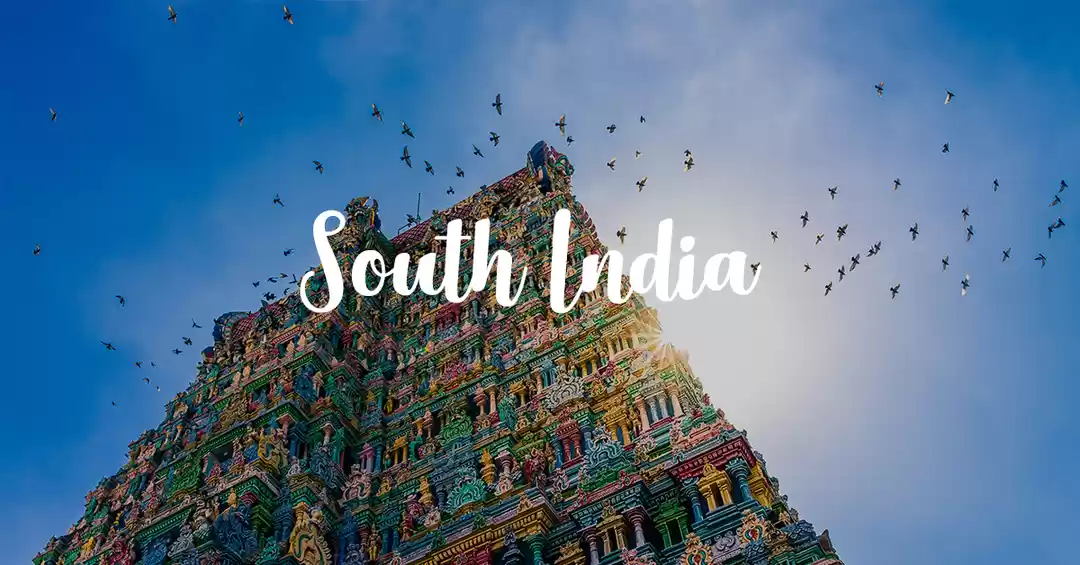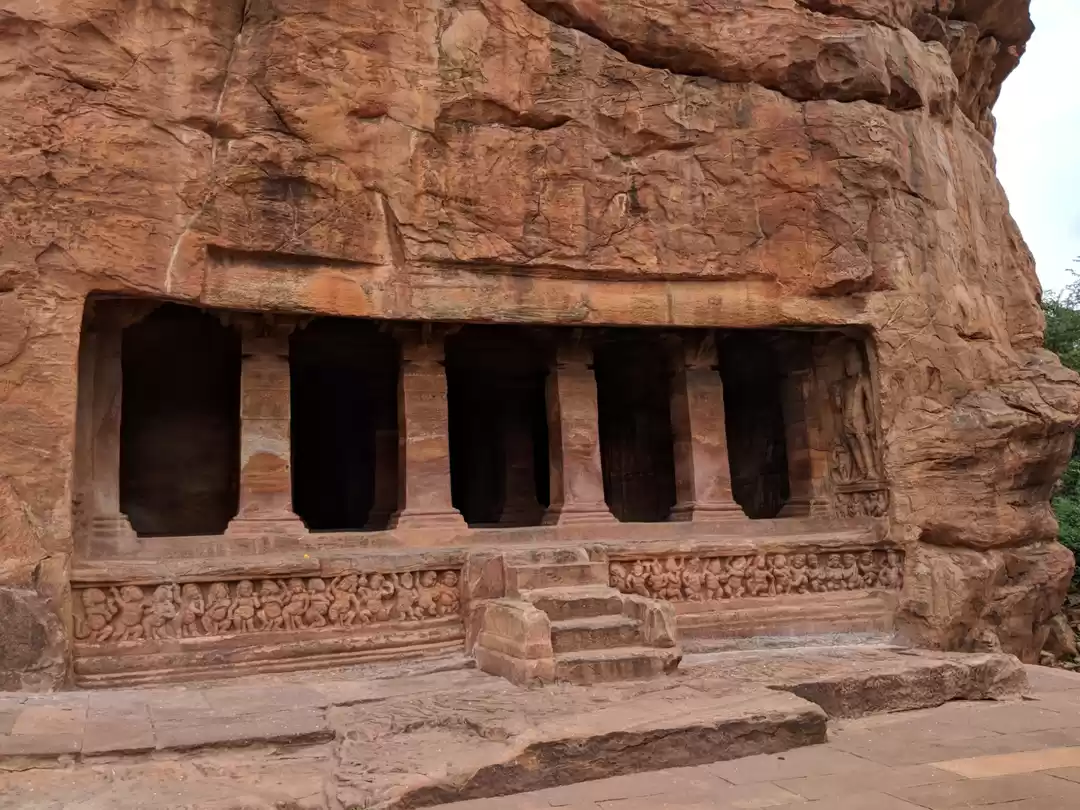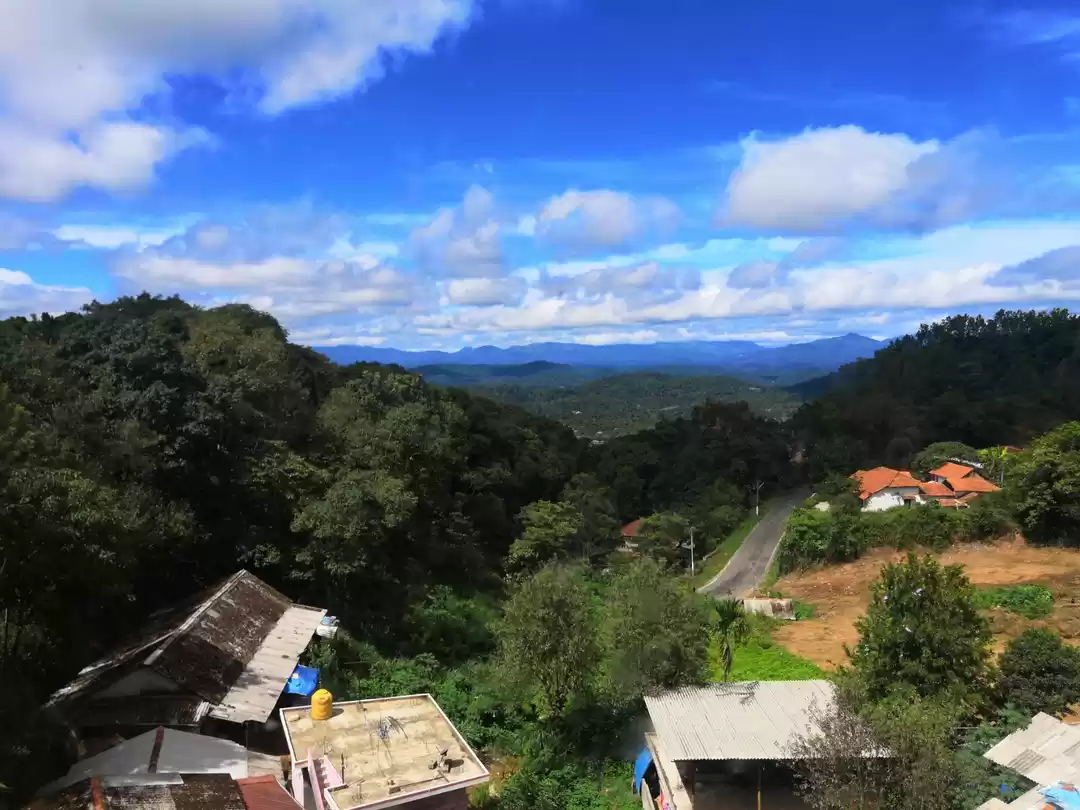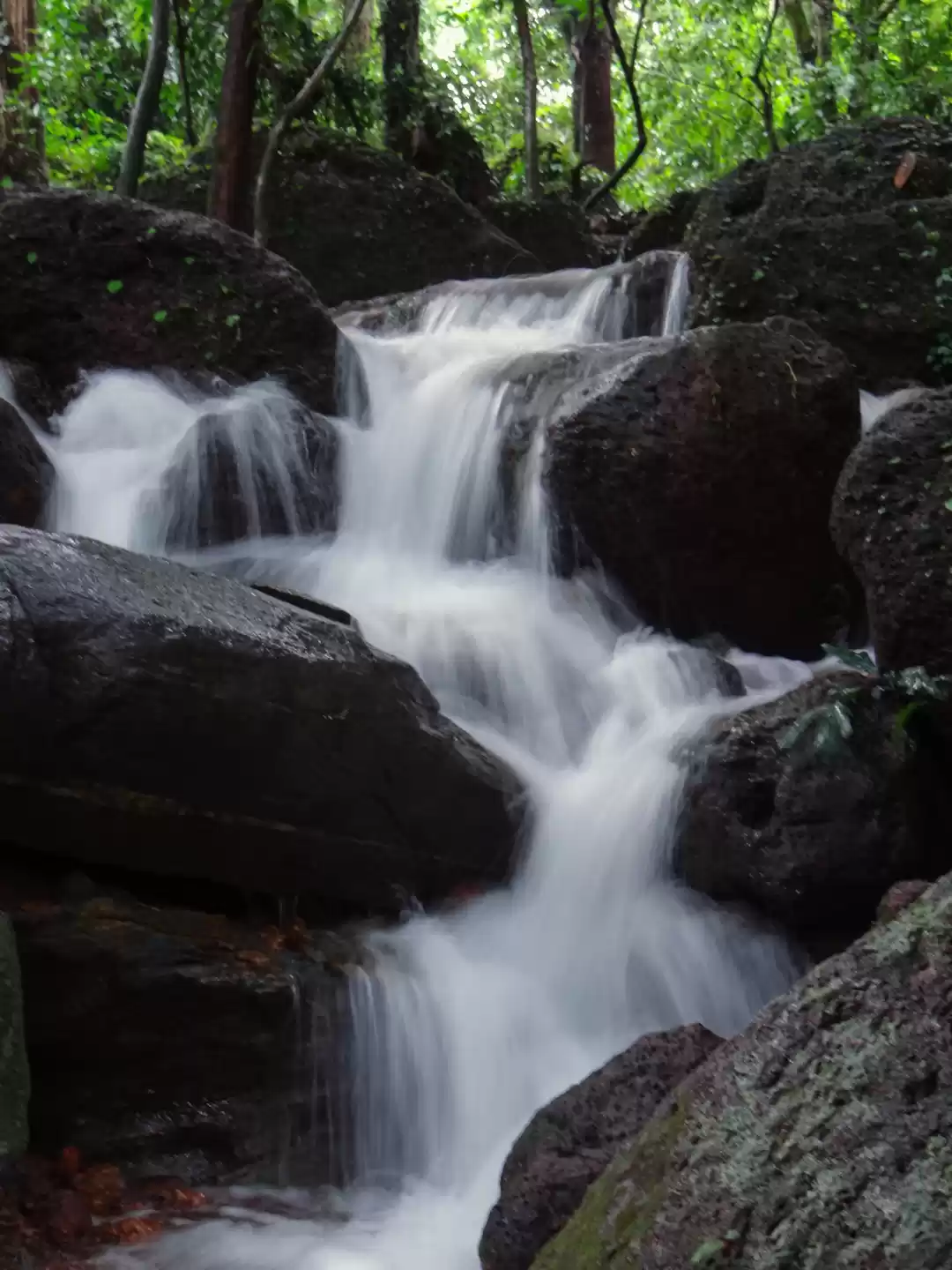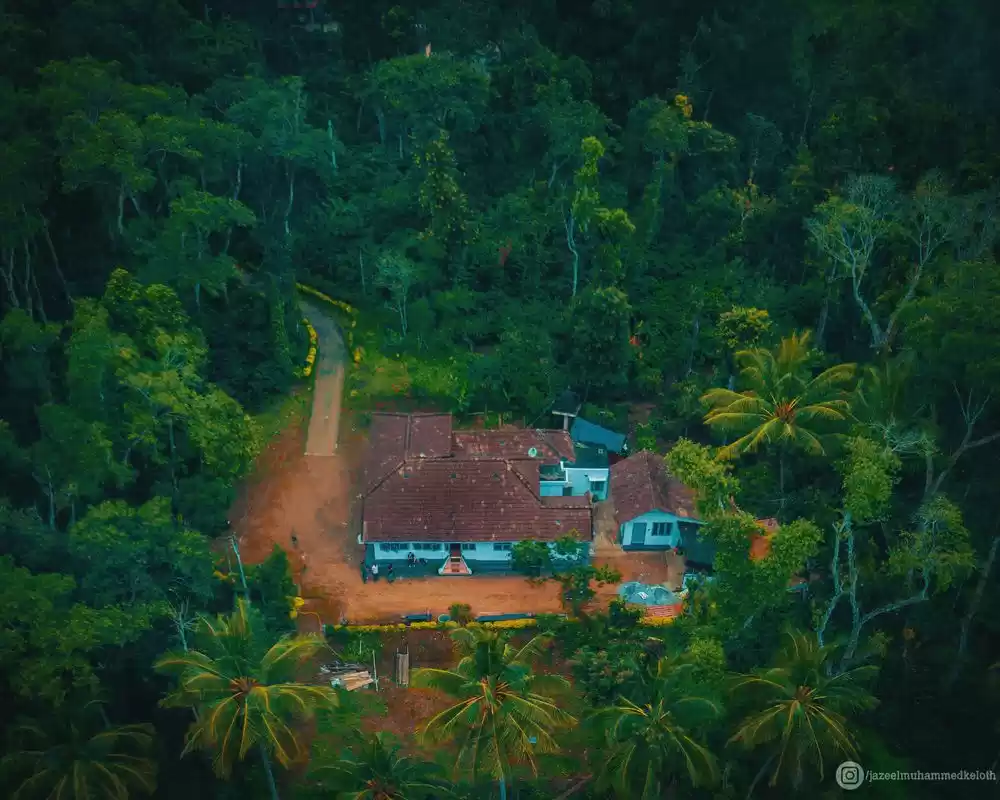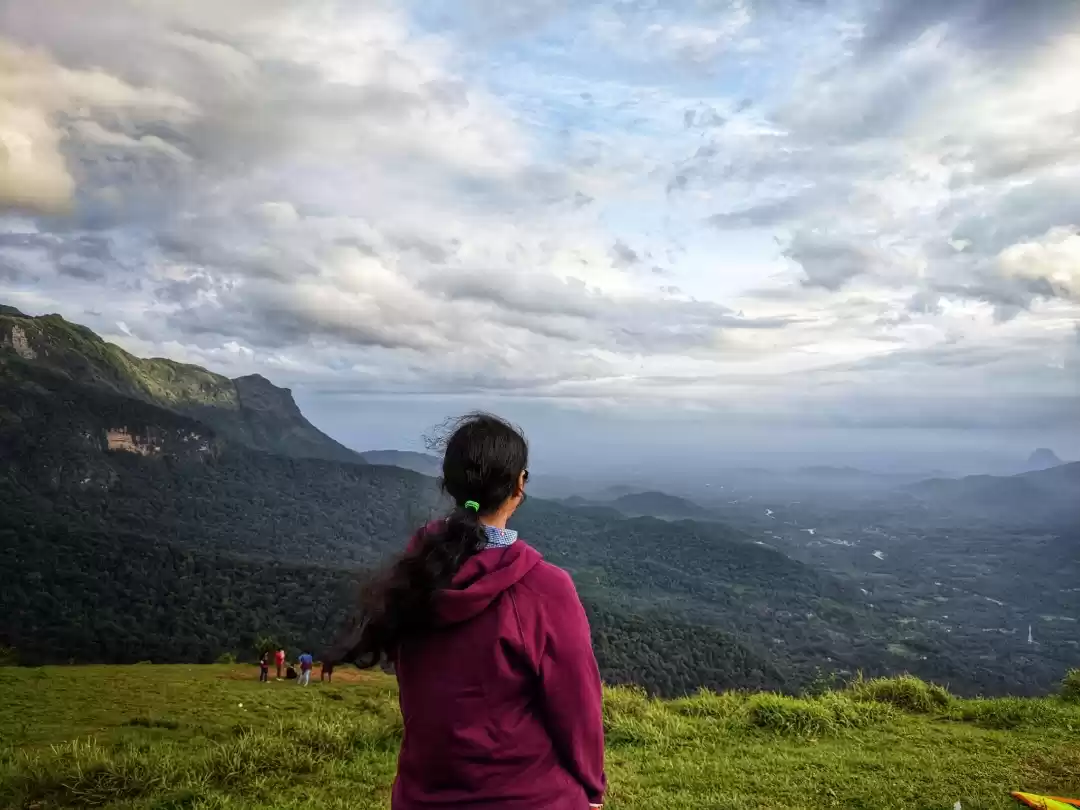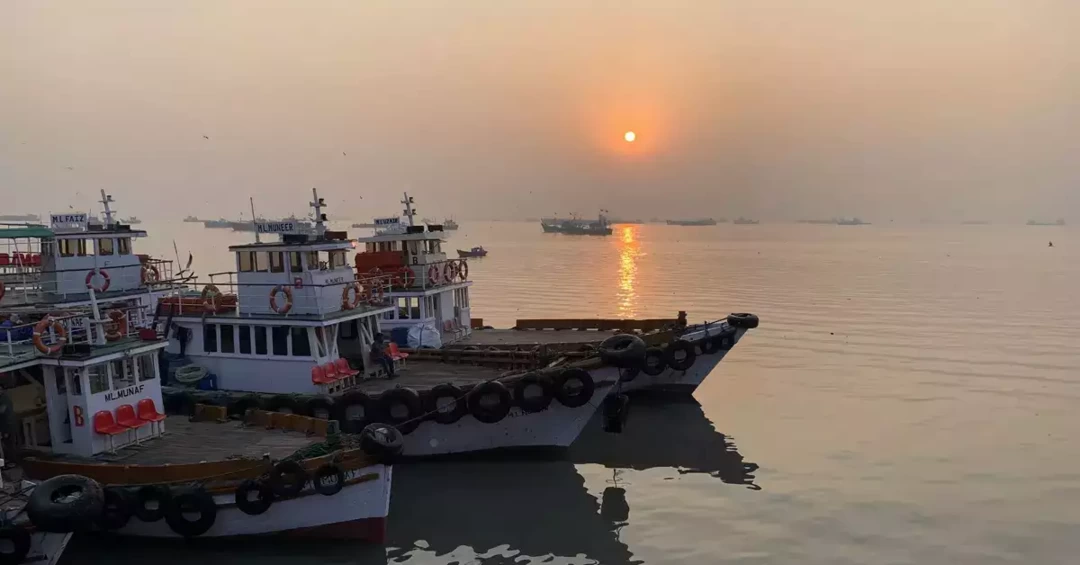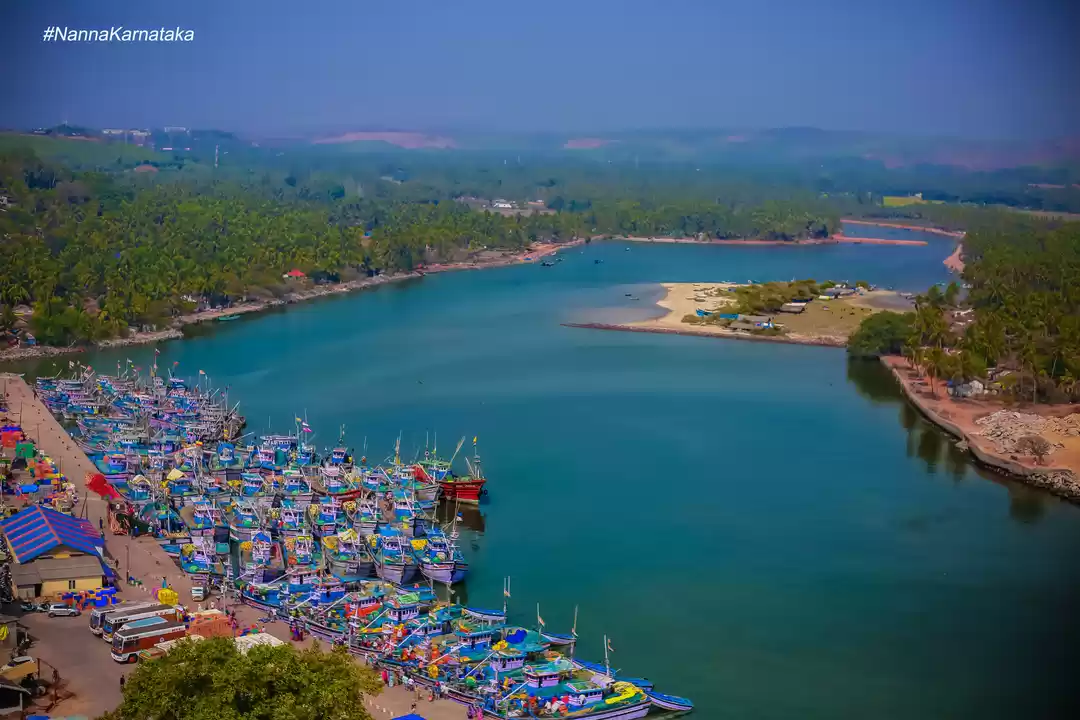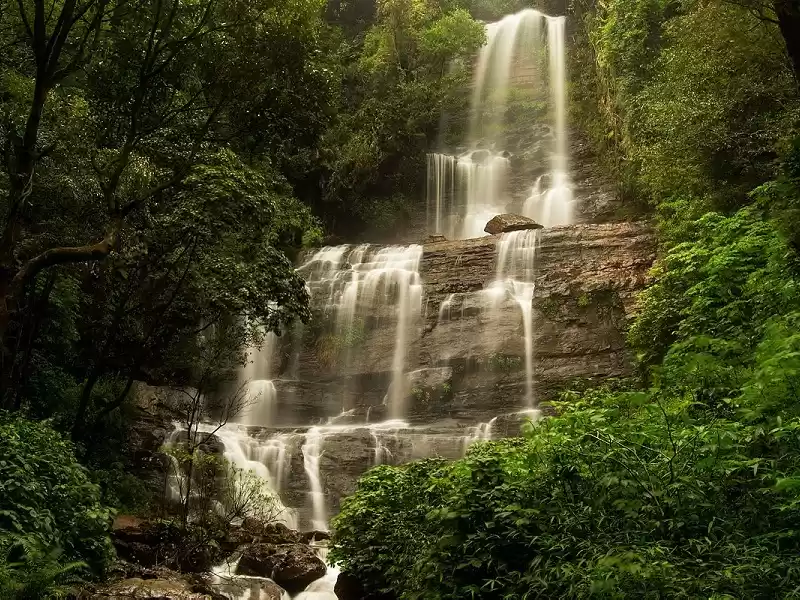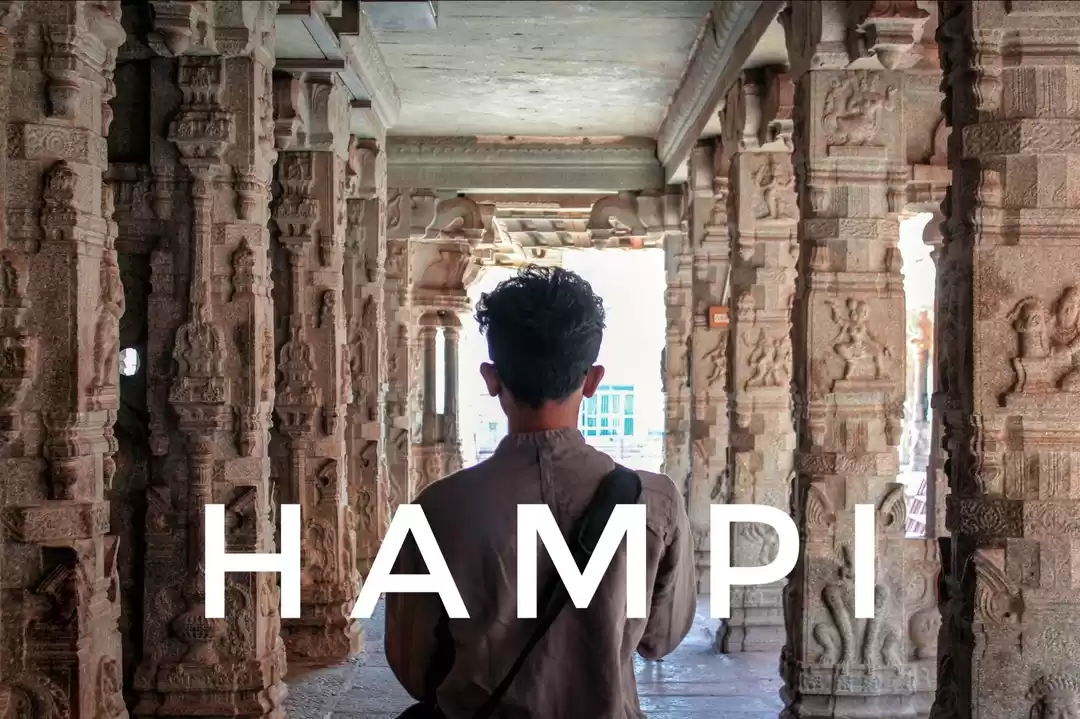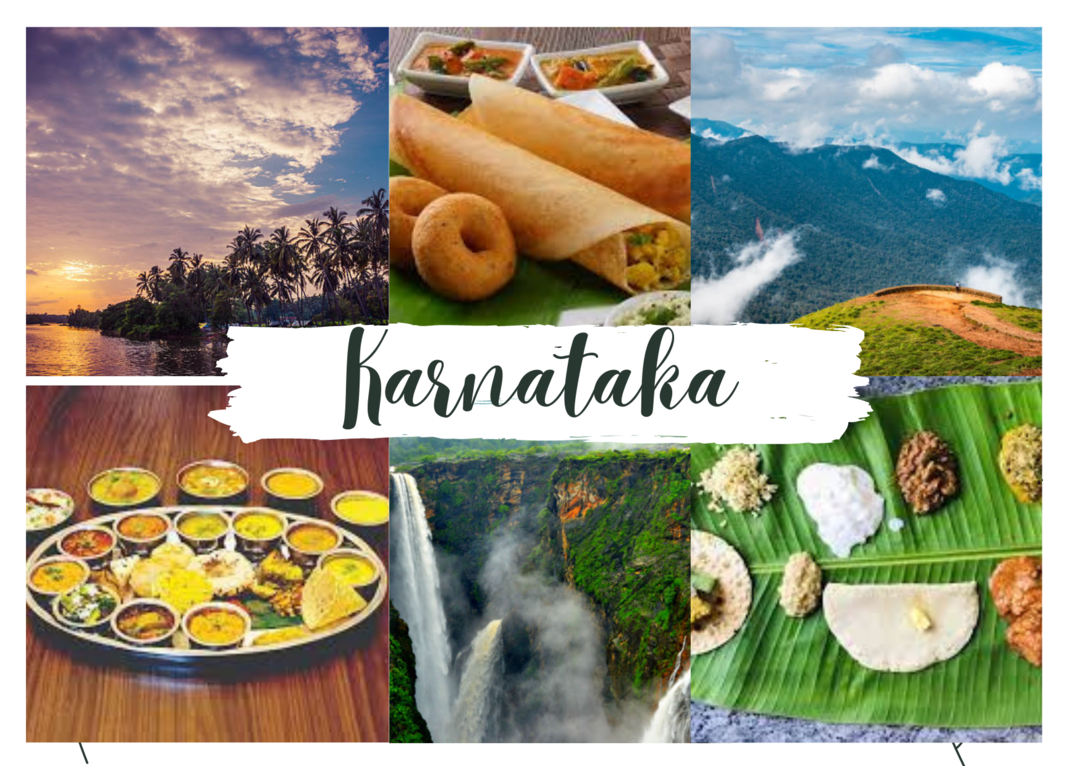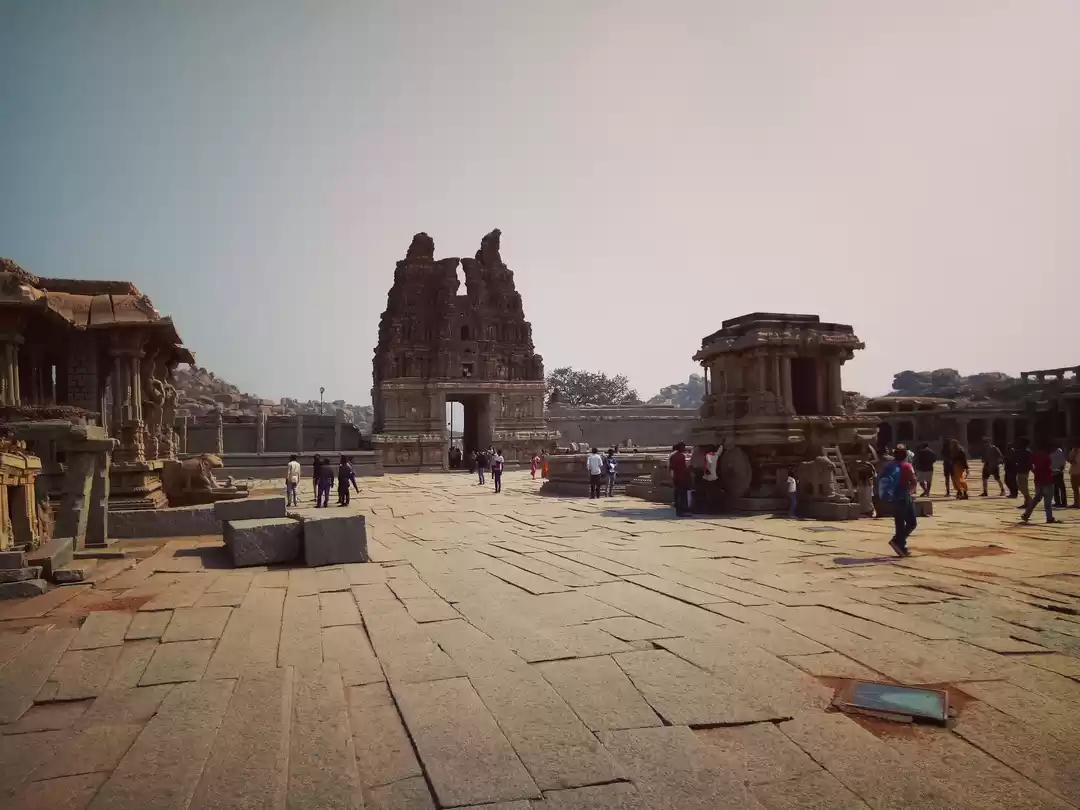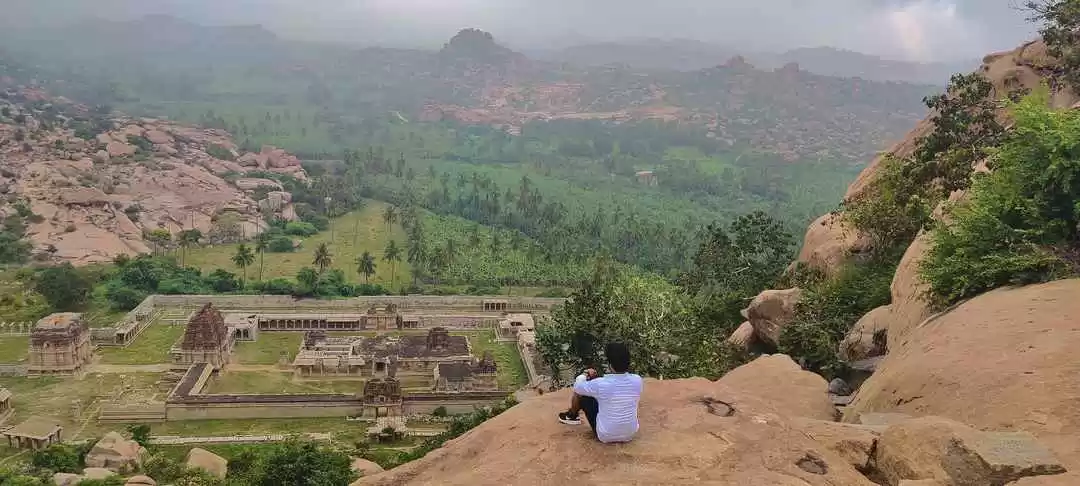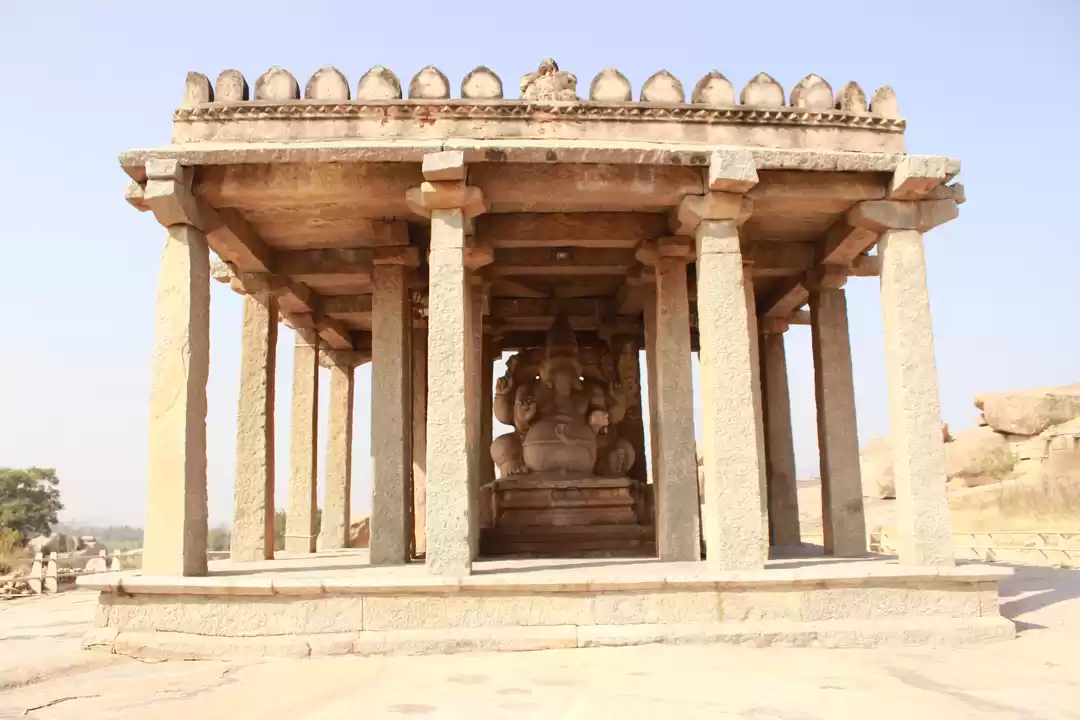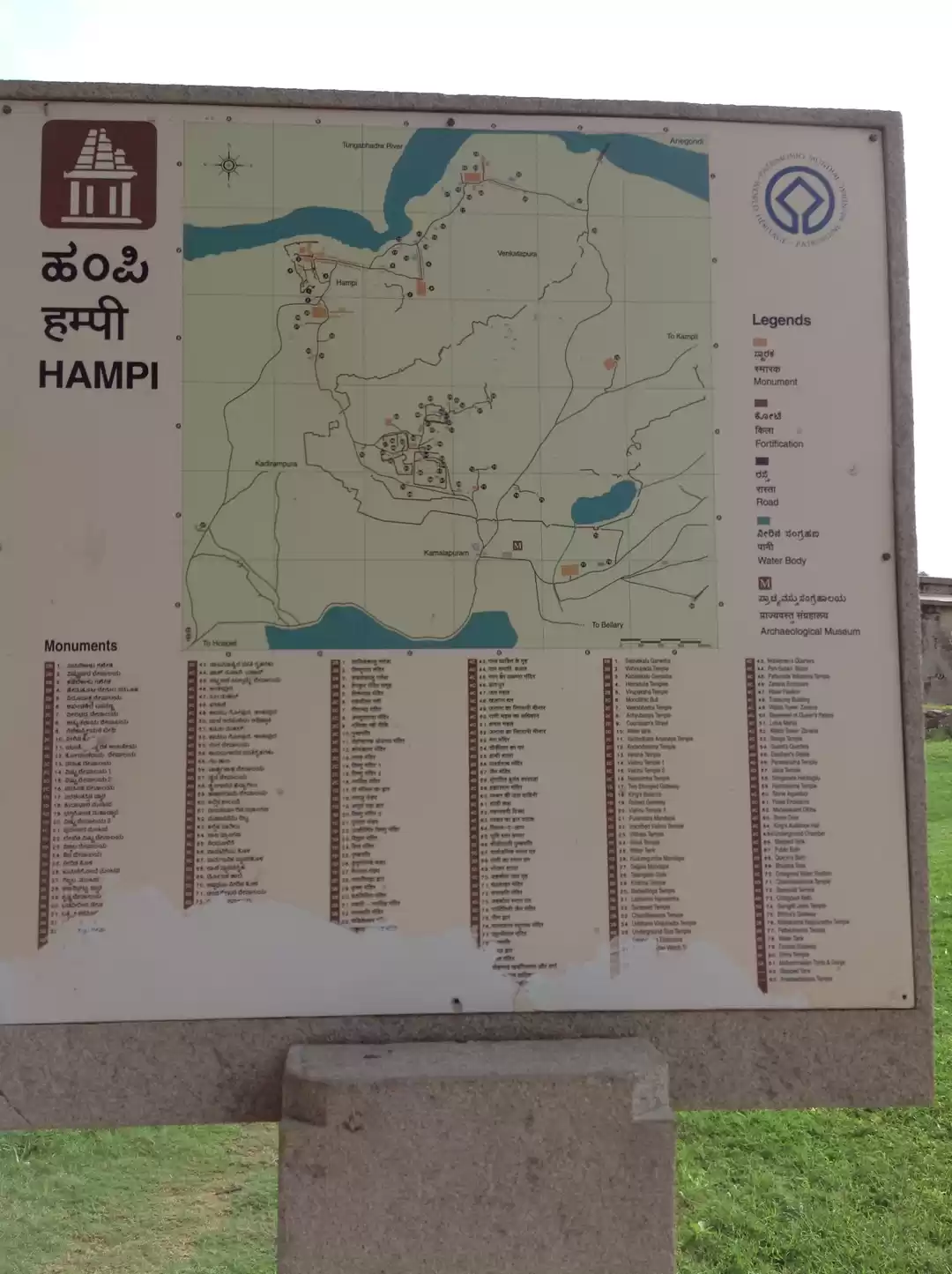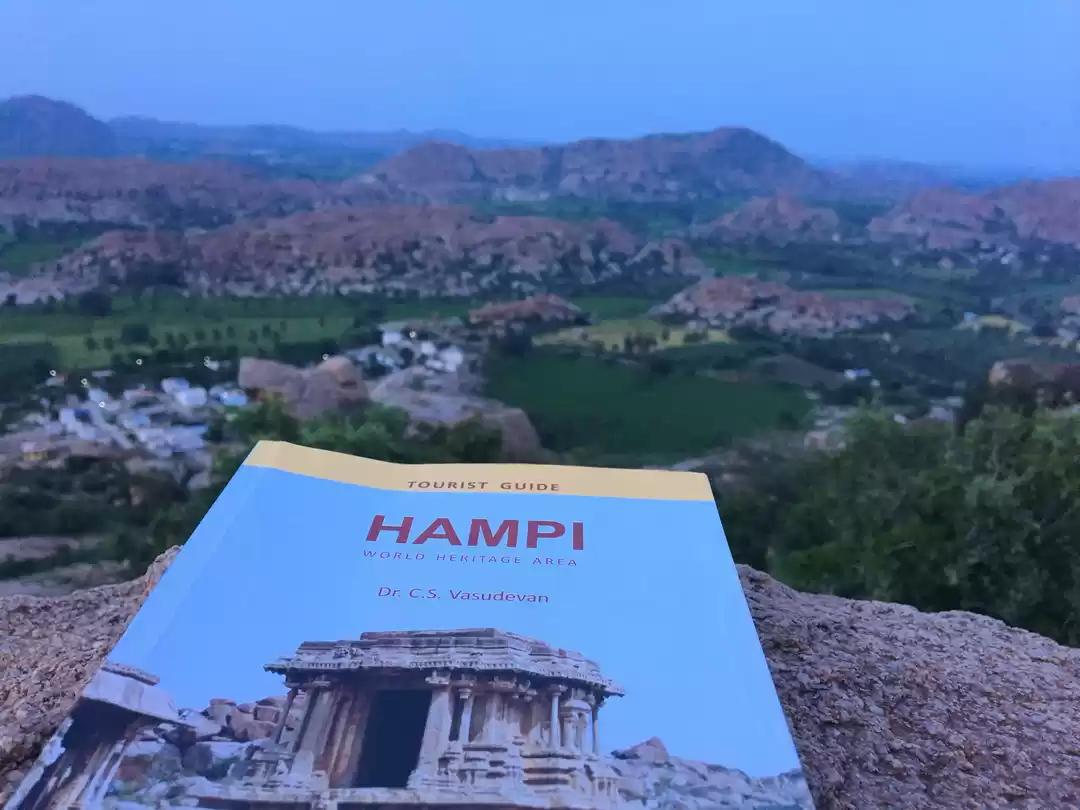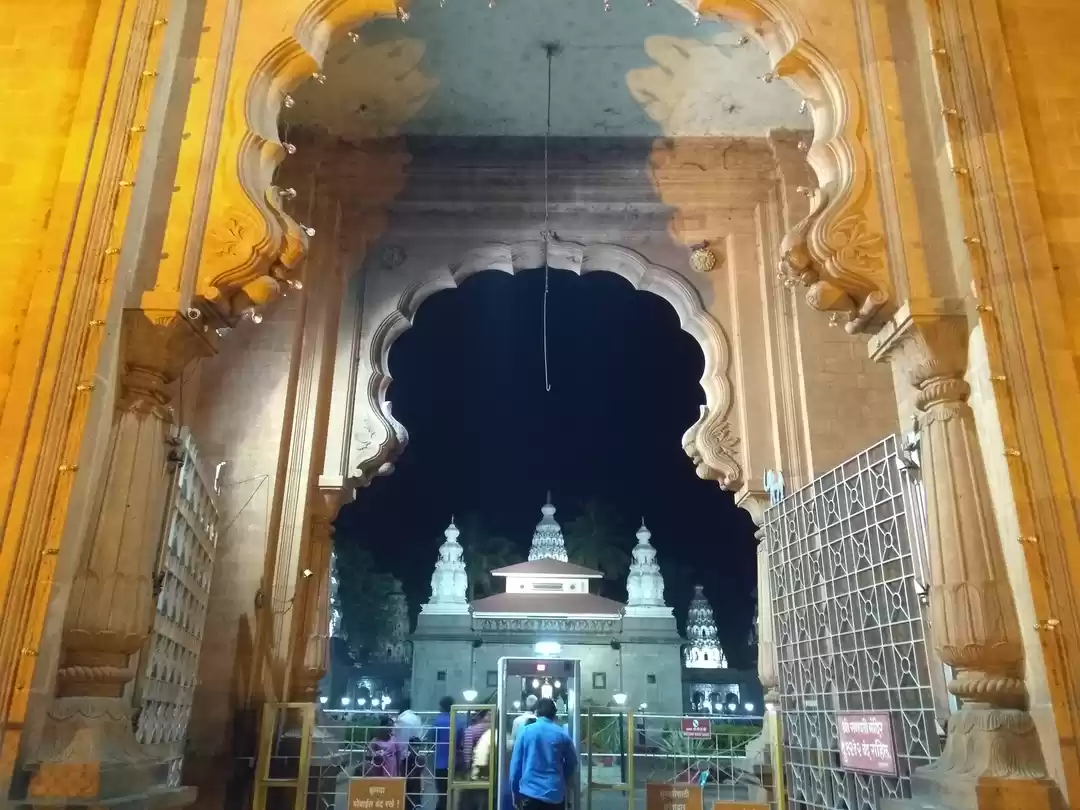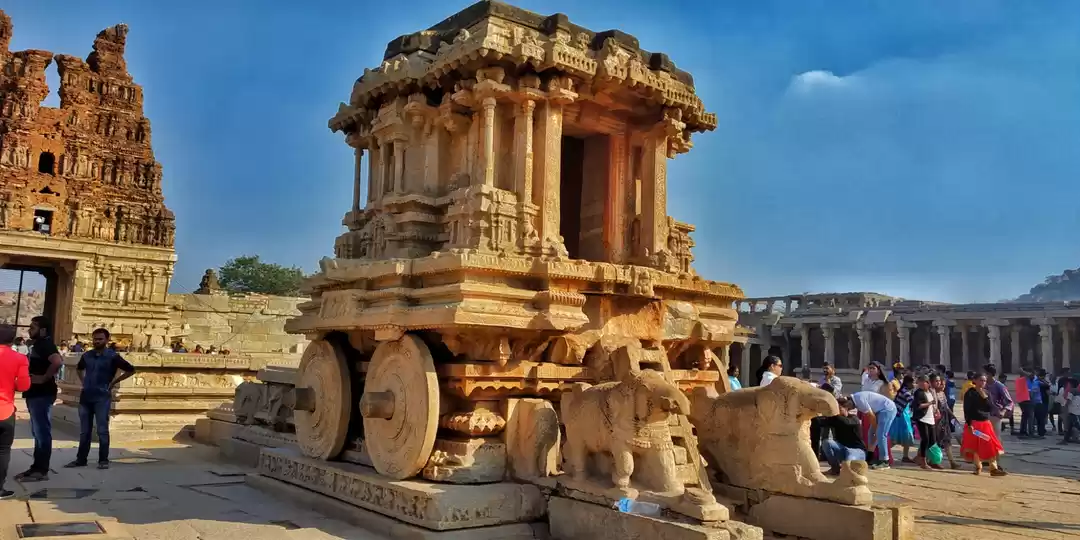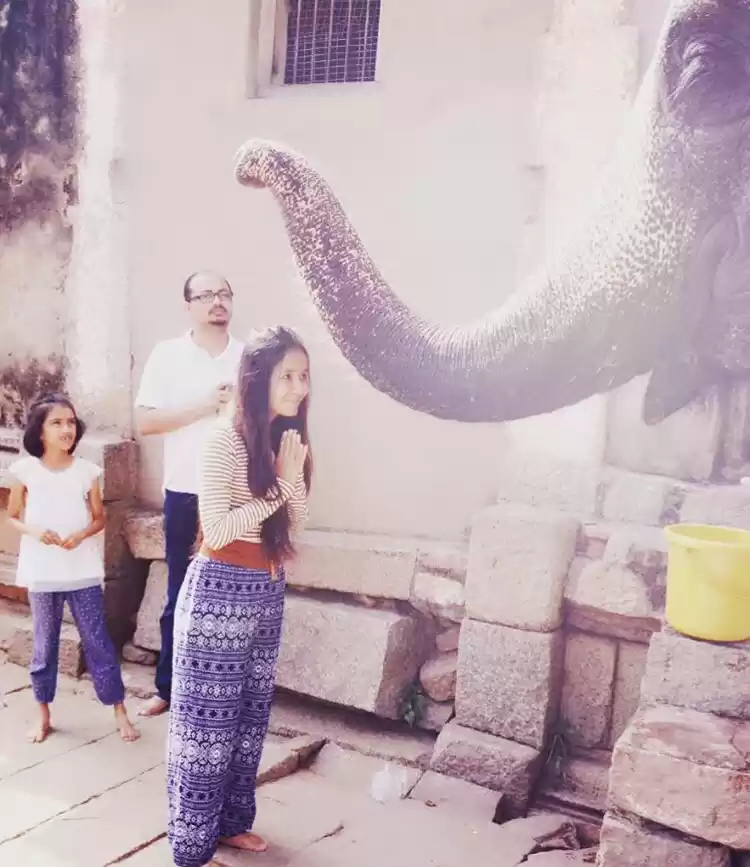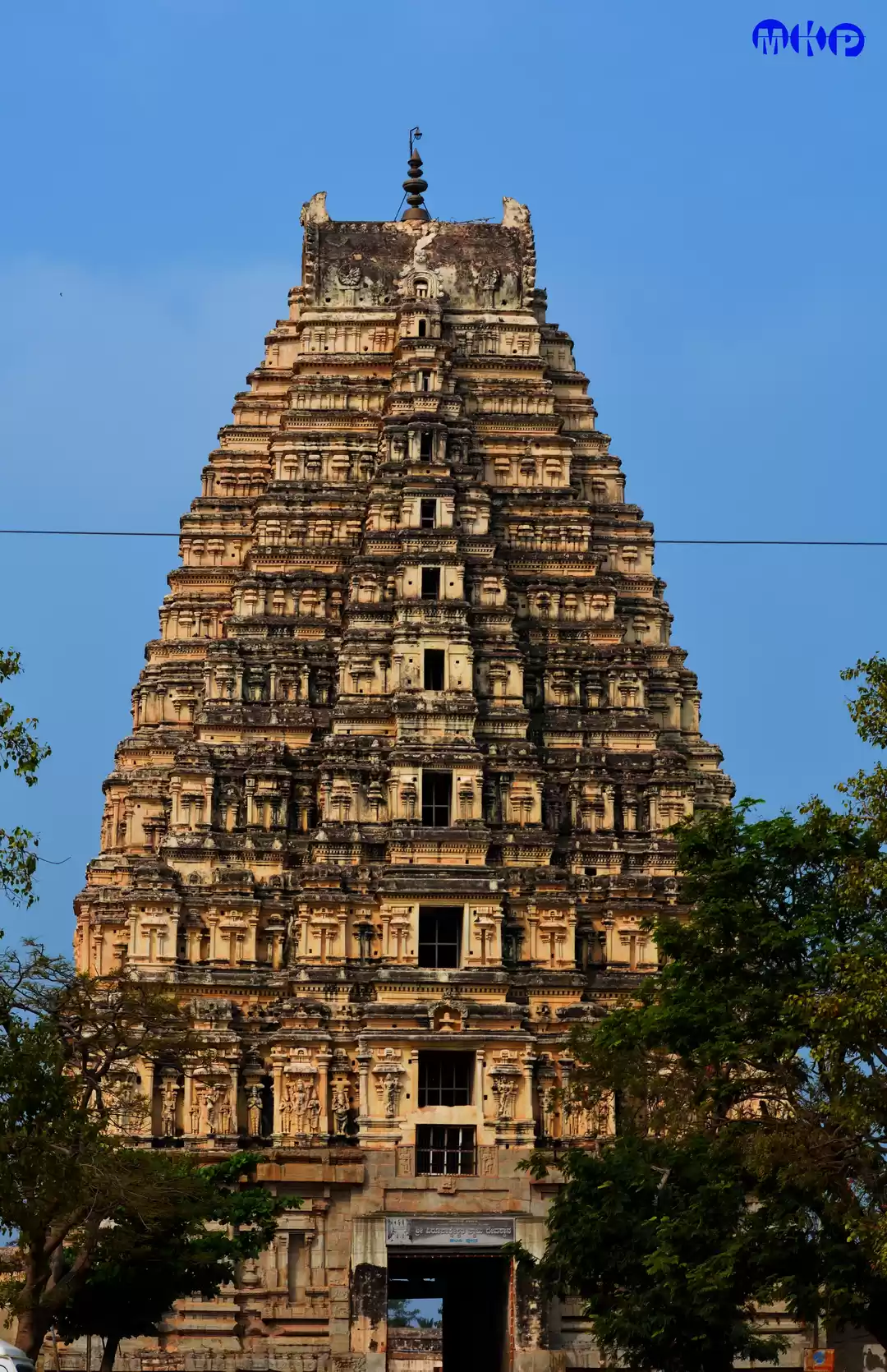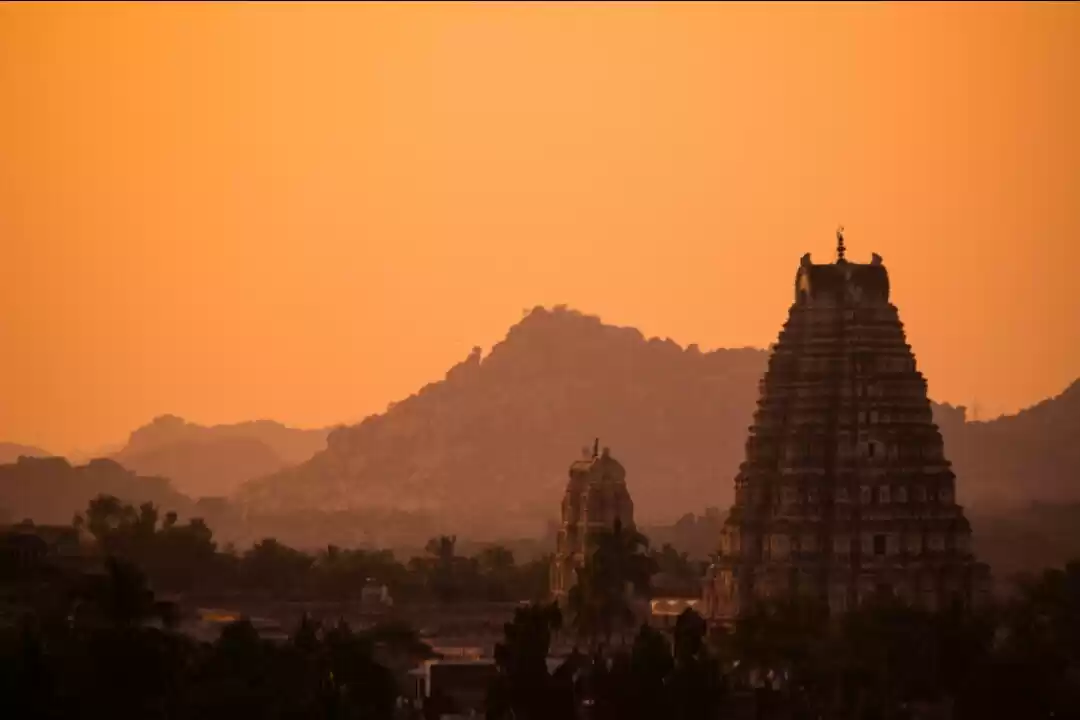
Hampi has been on our travel bucket list for some time. Since travel to Hampi requires quite a few logistical hoops, every time we started to think about planning the trip, it seemed to be getting pushed forward. This time around the stars fell into place and we managed to make it. This trip involved a train journey to Hubali, followed by a 3.5 hour road journey by an Innova to Hospeth. Hampi is about 12-13 kms from Hospeth. Usually the Hampi itinerary also involves the other twin city of Badami which has a 8 th Century heritage cave. We planned 2 nights at Hospeth, followed by 1 night at Badami.
Hampi was the capital City of Vijay Nagar Empire of the Chalukyas, which was at its zenith between the 14 th -16 th Century. Hampi was set up to benefit from the Tungabhadra River bringing in the much needed water and hills strewn with giant boulders providing protection. A tour of Hampi with a guide is essential as he can provide you the insights from the minute details on the carvings. For example at the Virupaksha (VP) temple the carvings narrate stories from the Ramayan which reveal the cultural heritage and the richness of those times.

The famous stone chariot from the 50 rupee currency note is from the Vittala temple. You are left imagining about the thriving Hampi bazar as he explains the significance of the vast expanse of the open market place in front of the main VP temple or the engineering marvel which brought water from the Tungabhadra to the step well at the king's palace which leaves you intrigued. It was a rich and thriving empire built over 300 years with more than 100 temples within a small area of 26 sq. kms from 14-16 th century. The temples are categorised as "active" - where the idol is intact and worshiped and inactive wherein the idol has been mutilated or was removed during the invasion. Not all temples are "active temples". The active ones have been marked with a white paint. The total number of monuments in this small area is easily north of 500. So much so that the traffic island enroute from Hospeth to Hampi has been carved around some of the less popular monuments or artefacts!!
Until the invasion by a coalition of Deccan Sultanates, the Vijay Nagar Empire had withstood multiple invasions. The coalition succeeded mainly due to their use of a special canon, believed to the largest cannon in the world then, casted by Adil Shah, which brought it down. The invading army camped in the city for over 6 months to destroy the art and cultural architectural monuments. The Hampi archaeological site has been declared as a world Heritage site by UNESCO.
While visiting Hampi, one cannot miss visiting the bylanes of the Virupaksha Temple. These bylanes host a multitude of "chill out" restaurants. Mango Tree being one of the more high profile ones and is covered by the likes of TripAdvisor. These are very smartly decorated "boutique-ish" joints and provide a surprisingly vide array of food options catering to international backpackers. No visit to Hampi is complete without visits to the sunrise and sunset look outs at the Anjanadri Hill (supposedly the birth place of Hanuman-the monkey god), Matanga Hill or Malyavanta Hill.


A visit to the Hippie Island via a short coracle ride across the Tungabhadra is a must. Hampi being a temple city, alcohol is banned, so tourists throng to the Hippie Island to chill out with a cold beer at the end of a day out in the hot sun. The Laughing Buddha is one of the popular joints which will give you your money's worth.
Amongst the luxury heritage tourism hotels worth visiting while at Hampi is certainly the one from the Evolve Back group. It is a grounds up luxe property which lulls you with its luxurious villas having a private swimming pool, open to sky baths and private dining rooms with butlers, truly providing you a Kings comfort. Instead of the rail-road-air route taking about 16-17 hours, the preferred route for guests hosted here is a total 4-5 hours max involving flying down from Mum-Hyd and then taking the True Jet to the nearby JSW airport where they arrange for a pick up.

One must do side trip, is a 1.5 hour drive to Sandur for the local handicrafts at the Sandur Kushal kala Kendra. Here you can buy exquisite khadi woven handicrafts. You should plan your trip well, so that post the Sandur Kushal Kala Kendra visit, you can have lunch at the Shiv Vilas Heritage property.
While at Hospeth here are some tips for local eats to try-For an authentic local breakfast visit Shree Laxmi at Kamalapur post a sun rise hike to Malyavanta hill. Other dishes to try are the Bonda Soup (which actually is a huge Bonda with a sambar-cum-dal), Set Dosa plate, Rava idli and Bisi bele bhaath. The good thing here is that even if you gorge on all of the things mentioned here, the max bill you can run up is Rs 400-450 that too for a family of 4! And one more thing, if you opt for coconut water as an accompaniment instead of water, only Rs 25 will get added to your bill. Similar spread in a place like Mumbai, is bound to set you back by anywhere between Rs 600- 800.

Enroute to Badami, Aihole and Pattadakal sites with temples built between a 6 th -12 th Century temple are a must do. Badami is a much older city which has caves with carving similar to the ones at Ellora Caves near Aurangabad in Maharashtra which are from a similar period. At Badami instead of getting a guide, we opted to go digital and use Google Lens instead. It's a very convenient just aim and point tech which gives you all details about what you are looking at, including what all to watch out for around the exact monument you are in front of.

Looking back, I'm happy I was finally able to make this trip as not only did this trip give me a glimpses of the Indian culture and history south of the Deccan, but also how the government is pushing through its agenda of Digital India. For e.g. at these heritage sites, the Digital India drive is very much visible with the Archaeological Survey of India (ASI) charging 25% lower for tickets bought through digital money.

Cheers to Hampi and Badami!



